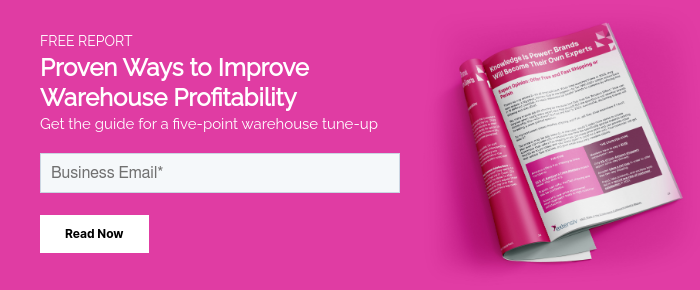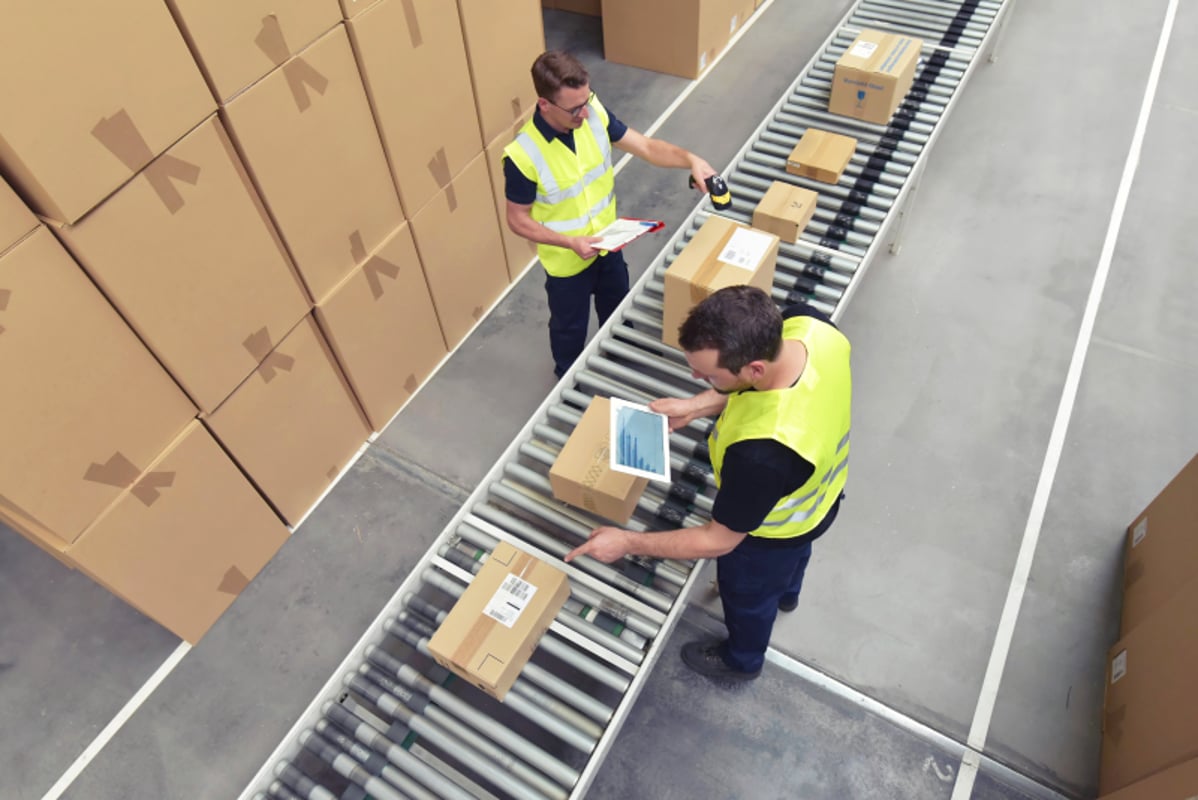The technology landscape of shipping and parcel has seen dramatic changes in the recent years, and that trend is accelerating as we move towards the close of 2021. As we highlighted in our recent blog post about new Shipping Trends, ecommerce sales are projected to be over $6 billion in sales on Thanksgiving Day alone this year. With this increased demand, logistics trends in technology have focused on improving the service capabilities for end customers and driving capabilities for businesses involved in fulfillment, such as third-party logistics (3PL) warehouses.
Here at Extensiv, our Small Parcel Suite team has been keeping tabs on the technological movements in the market. Read on to learn about the top five parcel technology logistics trends.
1. Integrated Omnichannel Solutions Dominate
One of the largest impacts of COVID-19 and the pandemic is that online shopping has accelerated the need for an omnichannel fulfillment strategy. Consumers are spending less time in physical retail locations and are opting to browse their favorite stores online. Retailers have reacted to this change in consumer behavior by offering online storefronts, store pick-up options, and curbside delivery.
For shippers, the key to adapting to this market is having an integrated technology stack that can accommodate omnichannel fulfillment centers. 3PLs need to examine their core technology needs, whether that includes ecommerce, electronic data interchange (EDI), inventory management (IMS), warehouse management (WMS), or enterprise resource planning (ERP) systems. At the practical level, shippers need to have forward and backward integration to fully streamline these increased demands from customers to pull off an effective omnichannel strategy. And this goes beyond your core systems and into the niche products you stack on top, including business intelligence (BI), hardware, billing, accounting, and labor tracking systems.
The key component of successful omnichannel integrations is connecting these systems. The best technology includes robust API capabilities and documentation, and service providers that can extend your team during implementation to take full advantage of the capabilities of the system. When you create an integrated system for your 3PL warehouse, opportunities emerge for business improvement. Processes become streamlined and more robust. Delivering on key customer needs such as reverse logistics becomes possible, and you can offer a high-quality return strategy.
2. Integrated Rate Shopping Is Mandatory
There has been a lot of press recently about the potential increase in surcharges for the larger carriers such as FedEx and UPS. As a result of these looming carrier challenges, we have seen a very large increase in niche shipping providers that are being used by Extensiv 3PL Warehouse Manager customers. The best solution for warehouses and shippers is to have integrated rate shopping directly at the packing station, with real-time quotes coming to the warehouse from multiple carriers right before you print the label.
The ability to shop rates between the big providers such as FedEx and UPS compared to these more niche solutions creates flexibility and drives cost savings. In addition, we’ve found a larger trend of niche shipping providers and larger carriers being accessible through middleware products. At Extensiv, we do not directly integrate with any carrier, but rather rely on our middleware partners to provide a larger carrier portfolio and service capability.
There are certainly challenges to advanced rate shopping. Customers want the cheapest rate delivered in the fastest time. Warehouses want the same thing, but also reliability and a lower probability for errors. While connecting the technology endpoints across a diverse network can create glitches, as API standards are constantly changing, it is the most efficient way to connect warehouse technologies. The recent tax changes in the European Union (EU) are a great example of how the shipping landscape can quickly shift and the underlying API capabilities of each carrier must also adapt.
3. BI and Reporting Capabilities
As technology solutions are integrated, there naturally becomes more business opportunity related to the data you can aggregate and how you can slice and dice that data to help your business. Business Intelligence platforms through the cloud are readily available, and we’ve seen a lot of technology solutions coming from the data side of parcel.
Some of the stronger use cases we have seen involve cost savings analysis, rate shopping audits, and delivery issue auditing. There are even specialized providers that perform data analysis on your carrier activity and spending to uncover cost savings based on automated algorithms. These programs can save larger shippers anywhere from 10-20% on average and have the capability to look at previous spending patterns.
For warehouse management systems, there are endless amounts of data points that can be extracted, assessed, and quantified. Shipping businesses and 3PL warehouses continue to invest in BI reporting capabilities, and we see that trend only continuing into 2022.
4. Specialized Cloud Solutions
One of the biggest trends in parcel that continues is the ongoing emergence of software solutions available through the cloud. As specific challenges emerge for shippers, there have been many emerging cloud solutions that entered the market with offerings nearly turn-key through the cloud. A great example we mentioned earlier is international shipping requirements to the EU. With the recent changes to the Value Added Tax laws (“VAT”) there are number of new requirements for how shippers register, pay, and declare taxable values on goods being shipped into the EU.
Another great example is for return supply chain management. Many Extensiv 3PL Warehouse Manager users have return programs that handle the entire process of returns through reverse logistics capabilities that report data directly to the WMS. There are also omnichannel return solutions where the cloud provider also includes physical return locations where they can manage the return process no matter who the originating seller.
Finally, advanced technology is rapidly coming to market. Special automation capabilities such as cartonization are now available as a service, like rate shopping, where technology stacks such as a WMS can send package and carrier specifications into an algorithm to return the best packaging setup based on the dimensions and weight of the items in the order.
5. Last-Mile and Middle-Mile Innovations
It is no secret that many of the larger carriers are trending heavily towards last-mile and middle-mile delivery strategies. One of the recent trends in that parcel space is the introduction of innovative technology such as drones, pickup lockers, and automated delivery vehicles. While many programs are still in early BETA phases, they are being heavily tested in larger markets. This means very soon we will start to see the entire parcel industry shifting to adapt to these innovations.
As third-party logistics warehouses continue to evolve, it is important to understand upcoming parcel trends to help meet customer and consumer demands. This is especially true for warehouses looking to successfully implement an omnichannel fulfillment strategy. From integrated rate shopping, business intelligence, reporting, specialized solutions, or last-mile delivery, today’s warehouses must be prepared.
To learn more about how 3PLs can streamline small parcel operations, check out our best practice webinar, Small Parcel Shipping Strategies for 3PLs.





.png?width=66&height=66&name=MicrosoftTeams-image%20(33).png)


